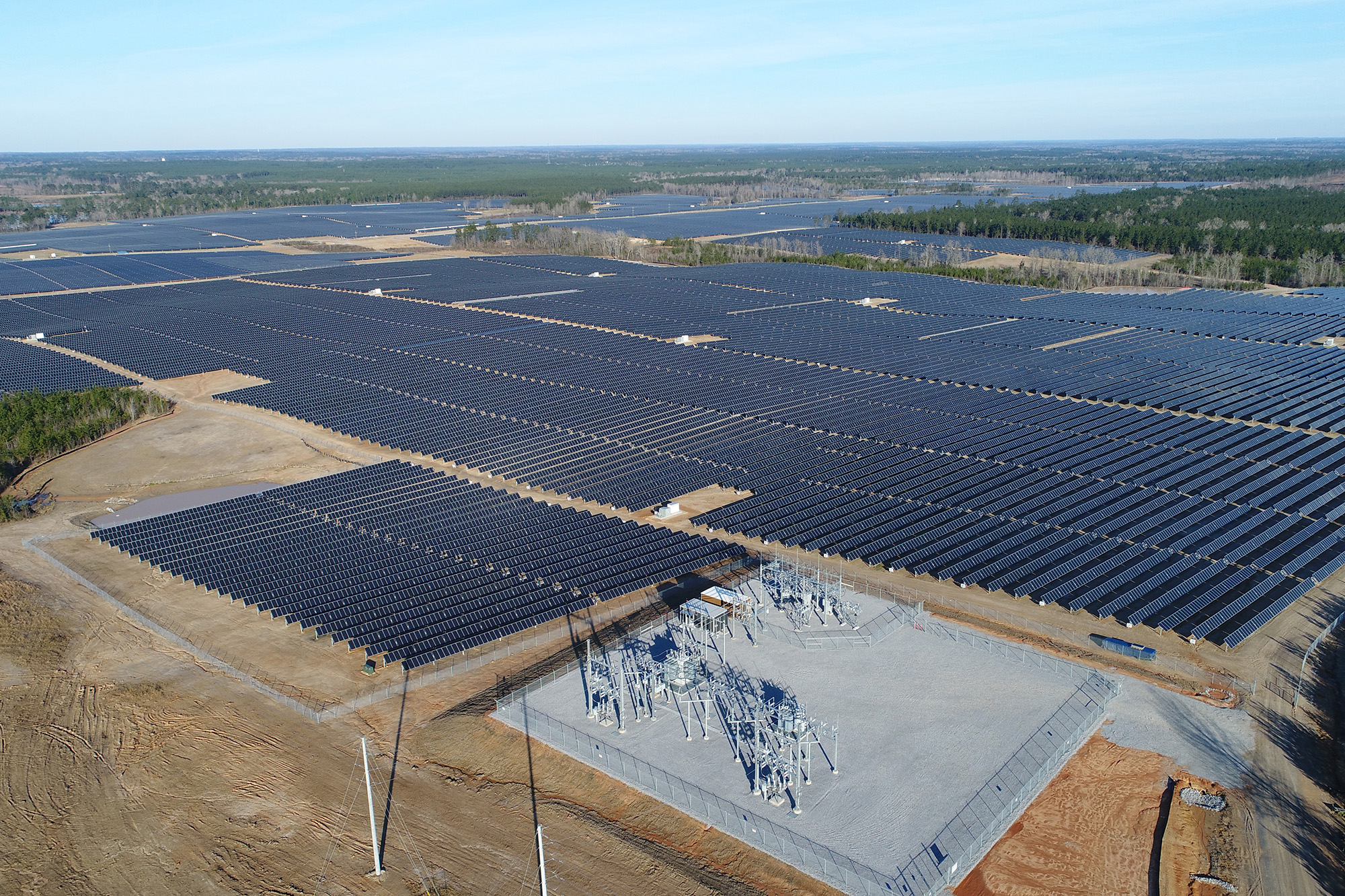
Projects backed by electric cooperatives are adding loads of solar power capacity to the nation’s energy supply, as more generation and transmission co-ops build or buy solar production.
“We built half a megawatt of solar capacity at five sites across our members’ service territory in 2016, and last year we added a 52 MW array,” said Jim Compton, president and CEO of Cooperative Energy. “The utility-scale solar project is providing enough electricity to power more than 10,000 homes across Mississippi.”
The Hattiesburg, Mississippi-based G&T’s first set of arrays were located outside the headquarters of five of its 11 member distribution co-ops. The 100-kilowatt projects gave thousands of co-op members opportunities to see solar panels operating in their communities.
“This new, utility-scale solar generator represents a giant step forward for Cooperative Energy in providing solar power,” said Compton. “Not only is it one of the largest solar generation plants in Mississippi, it employs the most advanced solar technology available today.”
Completed in December, MS Solar 3 consists of 206,000 solar panels erected on 540 acres in Lamar County, southwest of Hattiesburg.
“This area geographically benefits from an abundance of sunlight and we know it will be successful in reaching its generation goals,” said Guy Vanderhaegen, CEO and president of Origis Energy, which built the array.
Origis will own and operate the facility, with Cooperative Energy buying all of the energy produced under a power purchase agreement.
“We firmly believe you will see more electrical utility companies seek to expand their portfolio by adding solar and partnering in projects such as this one,” Vanderhaegen said.
There is evidence that trend is already taking shape.
Arkansas Electric Cooperative Corporation has inked a power purchase agreement for 100 MW of solar generation planned for construction in Ashley County.
“The addition of the 100 MW of solar capacity produced by the Crossett Solar Energy Farm will provide AECC with additional, reasonably priced power,” said Duane Highley, president and CEO of Little Rock-based AECC.
Highley added that the deal with Broomfield, Colorado-based Renewable Energy Systems Americas Inc. calls for delivery of power to begin in 2021.
Construction of the 362,000-panel array on 800 acres near Crossett, Arkansas, is expected to provide 175 temporary jobs. Three solar technicians will be permanently assigned to the site when it is in full operation.
Meanwhile, Wabash Valley Power has announced two power purchase agreements with New York-based Ranger Power, a utility-scale solar development company, for the full output from two 99 MW arrays in Illinois.
The company is building the first project, Prairie State Solar, in Perry County, with the second location yet to be determined. The combined 198 MW from both projects will triple the state’s current solar capacity, according to data from Solar Energy Industries Association (SEIA).
“Our agreements with Ranger Power are landmark, large-scale solar projects. With Wabash Valley receiving the energy and capacity and the state of Illinois benefiting from the [renewable energy credits], these projects are a great demonstration of the future of renewable energy growth,” said Jay Bartlett, CEO of Wabash Valley Power.
Construction is expected to begin in late 2019, with completion expected by 2021. The arrays are expected to produce enough electricity to power 30,000 average-sized homes.